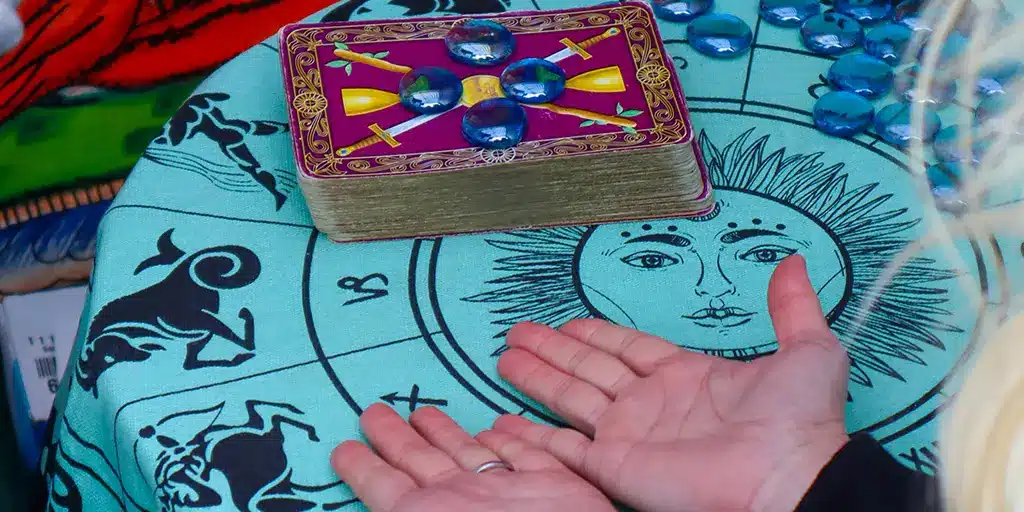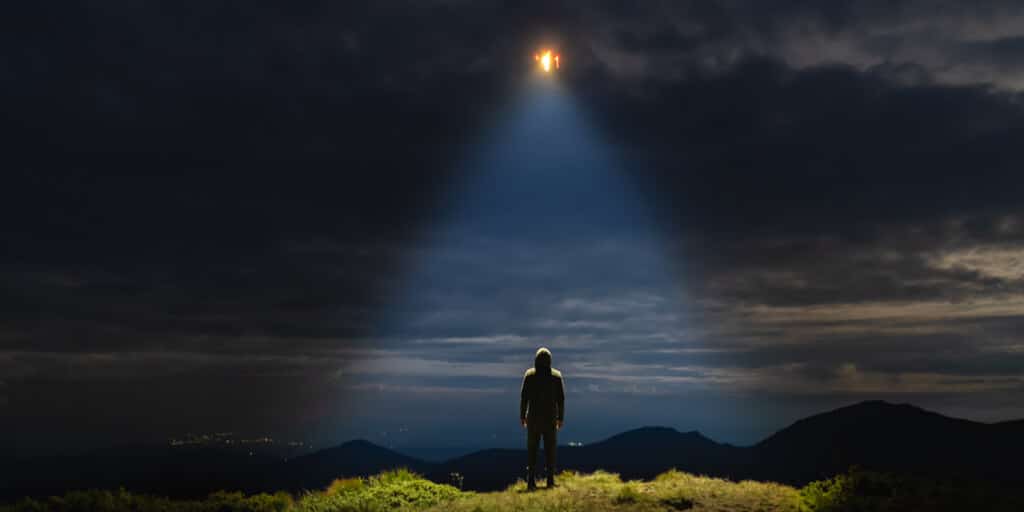When do Psychic Experiences Become Dangerous? – Part 1

Unfortunately, we cannot know when psychic experiences become dangerous. We can only say that they should not be sought. Brooks Alexander, senior researcher for Spiritual Counterfeits Project in Berkeley, California, made the following observation:
“Many people seem to have so-called ‘psychic’ experiences without being emotionally or spiritually injured by them. At the same time it seems clear that the world of psychic pursuit and fascination is a demonic playground. How do we know the acceptable level of psychic involvement? We do not know. Each individual encounters the demonic danger at his own level of temptation—whatever that may be.
“The fact is that no one knows how demonic beings operate in relation to psychic phenomena. Therefore it is impossible to say that ‘X’ amount of psychic involvement will result in demonic contact. We do not know where the line is drawn between dabbling and demonism, or between curiosity and commitment, nor do we know how and when that line is crossed. It may be that the question of ‘how much’ has less to do with it than we think. I would suggest that the neural and mental pattern set up by psychic involvement provides an interface with other forms of consciousness, which are extradimensional and demonic in nature. If that is the case, then psychic dabbling is a little like entering the cage of a man-eating tiger. You may or may not be eaten, depending in part on how hungry the tiger is. The significant point is that once you enter the cage, the initiative passes to the tiger.”[1]
It would appear that occult involvement is in many ways like other sins: the longer and deeper the involvement, the greater the risk. Perhaps for one person consequences could come sooner than for another. Thus a given activity or duration of activity in one context may not have the same effects in another context.
It must also be noted that the effects of psychic involvement may not be visibly discernible. They may be unseen, subconscious or incipient; for example, an indiscernible but increasing resistance to the gospel or the early imperceptible stages of psychological damage or demonization.[2]
It should be obvious that one reason the occult is dangerous is because it brings people into contact with demons who, despite their benevolent claim, have little love for men. In the Bible, demons are presented as inflicting numerous physical and psychological ailments upon their victims. While it must be stressed that most illnesses, mental or physical, are not demonically instituted, the array of possible symptoms cited in Scripture covers virtually all of the workings of the human mind and body: skin disease (Job 2:7), destructive and irrational acts (Matthew 8:28; Luke 8:27), deafness and inability to speak (Mark 9:25, Luke 11:14), epileptic-like seizures (Matthew 17:15; Mark 9:20; Luke 9:39), blindness (Matthew 12:22), tormenting pain (Revelation 9:1-11), insanity (Luke 8:26-35), severe physical deformity (Luke 13:11-17), and other symptoms. Demons can just as easily give a person supernatural power and knowledge (Luke 8:29) or attempt to murder him or her (Matthew 17:15).
Not surprisingly, there are many accounts of mediums, spiritists, and occultists—and those people who frequent them—suffering physically in a manner similar or identical to the symptoms described above.[3]
For example, the famous Russian medium Ninel Kulagina was the subject of repeated parapsychological experimentation. During some tests her clothes would spontaneously catch on fire and unusual burn marks would appear on her body. She “endured pain, long periods of dizziness, loss of weight, lasting discomfort” sharp spinal pains, blurred vision, and a near-fatal heart attack from her psychic activities.[4] Unfortunately, the heart attack was massive and left Kulagina a permanent invalid.
The infamous “black” occultist Aleister Crowley ended up in an insane asylum for six months after trying to conjure the devil. His attempts to conjure helping spirits often produced demons instead. His children died and his wives either went insane or drank themselves to death. Two biographers observe, “Every human affection that he had in his heart… was torn and trampled with such infernal ingenuity in his intensifying torture that his endurance is beyond belief.”[5] Crowley’s tragedy illustrates an important point, that even with great knowledge and expertise in the occult, one is still not safe. And if experts in the occult aren’t safe, how can anyone else guarantee their own protection?
Further, tragic “accidents” and other injuries also happen to the psychically involved and sometimes to their families. No less an authority than Dr. Koch has observed that people under occult subjection and demonization “frequently are in fatal accidents. I have many examples of this in my files.”[6] Elsewhere he observes, “I would like to point out that in my own experience numerous cases of suicides, fatal accidents, strokes and insanity are to be observed among occult practitioners.”[7]
As we survey the world of the occult, it is easy to cite illustrations of such “accidents” and other consequences. The famous psychic surgeon Arigo died in a horrible car crash; the Russian occultist Gurdjieff nearly died in a fatal car accident. Well-known parapsychologist Edmond Gurney, author of Phantasms of the Living, died a tragic death either by accident or suicide; “Christian” spiritist William Branham died from a car accident; occult guru Rudrananda died at age 45 in a 1973 airplane crash.[8]
The famous medium Eileen Garrett’s parents both committed suicide; Krishnamurti’s brother, Nityananda, died at age 25, and Krishnamurti himself experienced terrible demonization throughout his life. He suffered incredibly strange and agonizing torments as part of a transforming “presence” he called “the process.”[9]
James I. Wedgwood, a Theosophy convert and leader of the Theosophically instituted Liberal Catholic Church, went mad for the last 20 years of his life—and we could mention scores of other illustrations. In our own studies, we have encountered heart attacks; epileptic seizures; mental derangement; strange blackouts; stomach, eye, and skin problems; and many other maladies from occult practices.[10]
(to be continued)
Extracted from John Ankerberg, John Weldon, Facts on the Occult.
- Personal correspondence from Brooks Alexander, January 25, 1985. ↑
- e.g., Malachi Martin, Hostage to the Devil: The Possession and Exorcism of Five Living Americans (New York: Bantam, 1977), pp. 521-530. ↑
- John Ankerberg and John Weldon, The Facts on Spirit Guides (Eugene, OR: Harvest House, 1988), pp. 38-41. ↑
- Henry Griss, William Dick, The New Soviet Psychic Discoveries: A Firsthand Report on the Latest Breakthroughs in Russian Parapsychology (Englewood Cliffs, NJ: Prentice-Hall, 1978), pp. 28-31. ↑
- Aleister Crowley, Magic in Theory and Practice (New York: Castel, n.d.), pp. 127, 152-153, from North, Unholy Spirits, p. 286; Leslie A. Shepherd, Encyclopedia of Occultism and Parapsychology, Vol. 1 (Detroit, MI: Gale Research Company, 1979), p. 203; cf. J. Symonds, K. Grant, The Confessions of Aleister Crowley (New York: Bantam, 1971), pp. 575-576. ↑
- Kurt Koch, Satan’s Devices, p. 238. ↑
- Kurt Koch, Between Christ and Satan (Grand Rapids, MI: Kregel, 1976), p. 102. ↑
- For Arigo: John G. Fuller, Arigo: Surgeon of the Rusty Knife (New York: Pocket Books, 1975), p. 237; For Gurdjieff: J. G. Bennett, Gurdjieff: Making a New World (New York: Harper & Row, 1973), p. 160; For Gurney: D. Scott Rogo, Parapsychology: A Century of Inquiry, p. 66; For Branham: William Branham, Footprints on the Sands of Time: The Autobiography of William Marion Branham (Jeffersonville, IN: Spoken Word, 1976), p. 705; For Rudrananda: Da Free John (his disciple), The Enlightenment of the Whole Body (Middletown, CA: Dawn Horse Press, 1978), p. 14. ↑
- For Garrett’s parents: Norma Bowles, Fran Hynds, Psi-Search (New York: Harper & Row, 1978), p. 89; For Krishnamurti and Nityananda: Mary Lutyens, Krishnamurti: The Years of Awakening (New York: Avon, 1976), p. 347. ↑
- For Wedgewood: Lutyens, Krishnamurti: The Years of Awakening, p. 308; John Weldon, The Hazards of Psychic Involvement, ms., 1988. ↑








